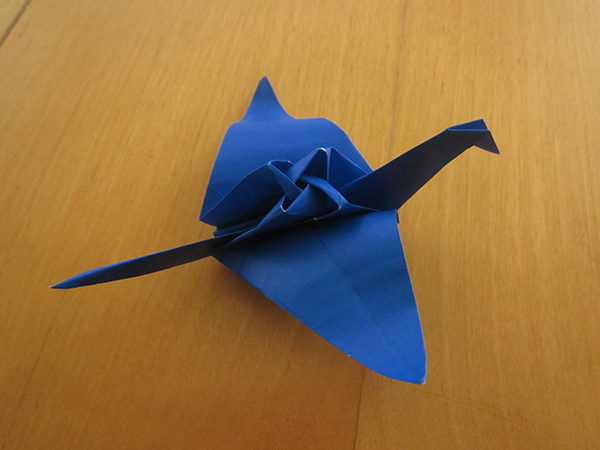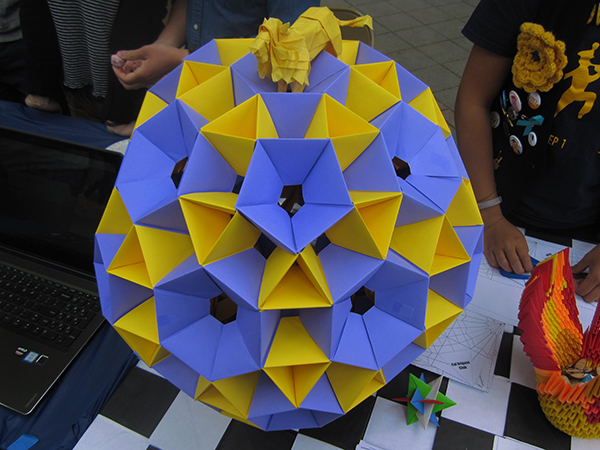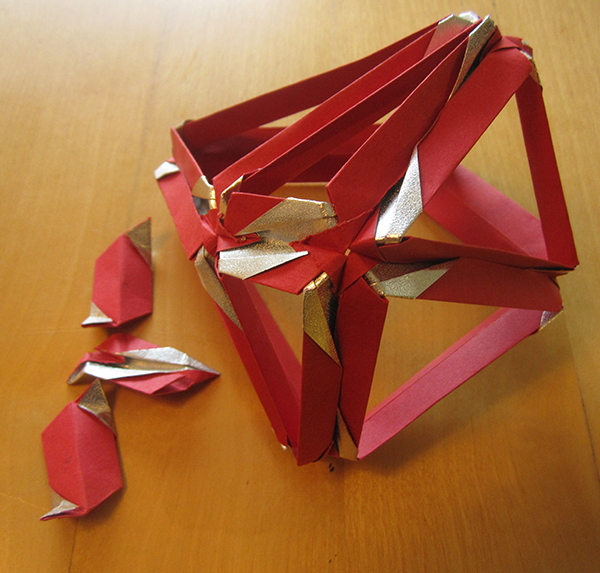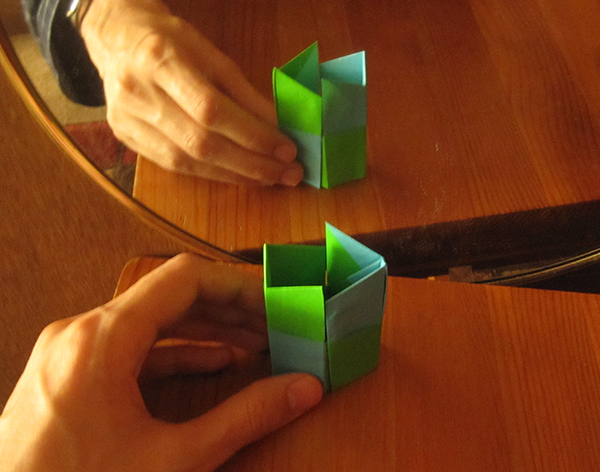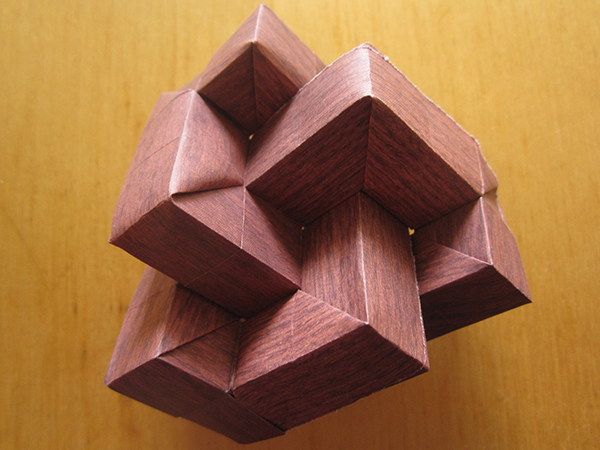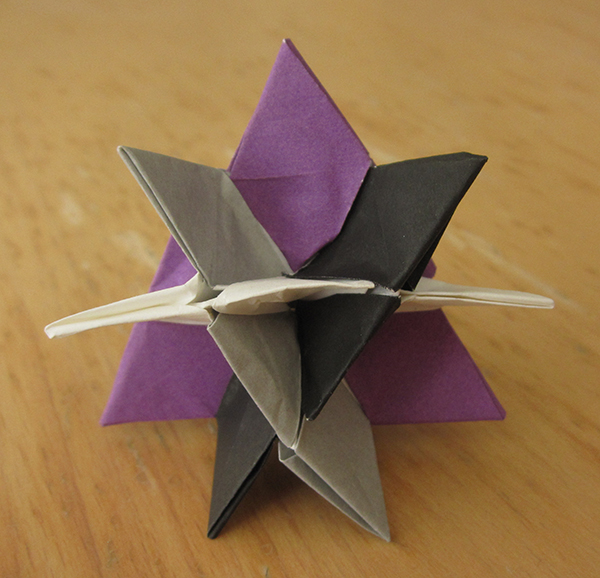
Skewed WXYZ, a model designed entirely by me. It’s about 6 cm (2.5 in) diameter.
There are two things to talk about in this model. First, the color scheme is taken directly from the ace flag, which feels timely because last week we were just marching in pride parades. I really like the color scheme of the flag, and also like how easy it is to make these references even in a very abstract art-form like non-representational origami.
Second, there’s the model’s design. This is an entirely original design, although it’s based on Tung Ken Lam’s WXYZ Triangles. Folding diagrams, discussion, and mathematics below the cut.

